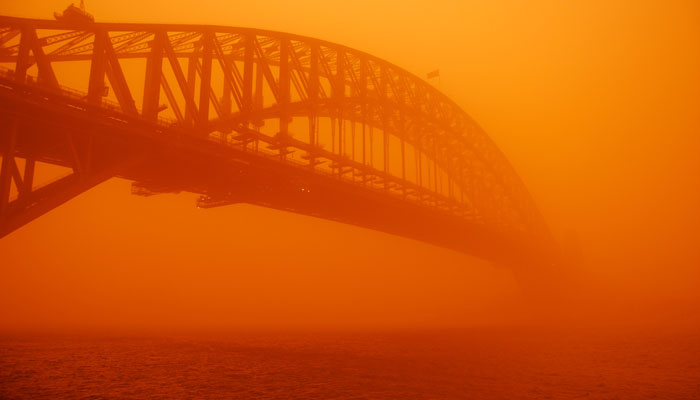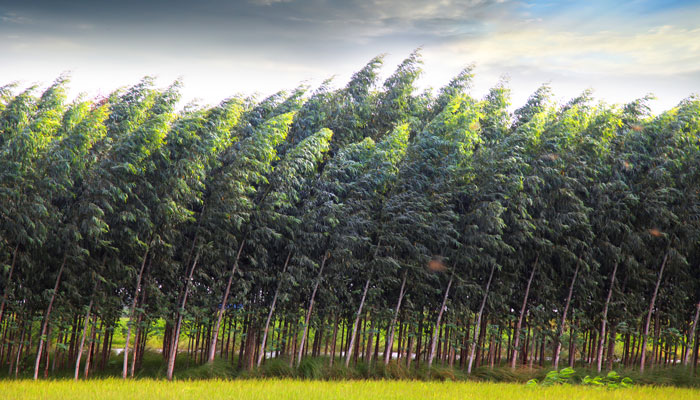Paul Hesse, Senior Lecturer Department of Environmental Science, explains:
A dust storm is caused when hot dry winds come before a big cold front. As the cold front moves through, turbulent winds pick up the dust and carry it from west to east. Usually, the dust phenomenon wouldn’t get all the way to the east coast.

The Red Dawn day in Sydney: In 2009 clouds of red dust swept across NSW and Queensland with planes grounded and schools closed. Pic credit: John Byrne.
Today’s phenomenon may not develop into a full-blown dust storm but may just be “raised dust” which decreases visibility. In a dust storm you can see less than 1,000 metres ahead of you.
Often you get thunderstorm activity with the cold front that might cause the dust to be rained out or the front might slip off to the south and not actually come this far north.You need extraordinary conditions to get it to come this far to the coast.
More dust likely if drought continues
The other dimension is that the area has to be in drought, especially in the inland areas. There is a simple correlation between the drought, and especially the length of the drought, and the occurrence of these dust storms. With the ongoing drought, we are likely to see more of these phenomena in coming months.
One of the most memorable Australian dust storms was in 2009, dubbed ‘the Red Dawn’ event after a 1984 action movie starring Patrick Swayze. Clouds of red dust swept across the ACT, Queensland and NSW. Air particle concentration climbed to 15,400 micrograms per cubic metre of air when it is normally about 20 micrograms. That event lead to flights being grounded and construction sites closed. Children didn’t go to school and outdoor sporting events across the states were cancelled.
Dust also carries nutrients
Historically, dust storms are a cyclical phenomena triggered by droughts: during the Millennium drought there were several large dust storms, as well as the droughts in the 1960s and also during the Depression and WWII.

The upside of extraordinary weather: wind carries nutrients from farmland to the sea, says environmental scientist Paul Hesse.
While the dust storm brings with it health warnings to people with respiratory and cardiovascular conditions such as asthma, bronchitis and emphysema to stay inside to avoid tiny particles geting deep into the lungs - the storm also blows soil nutrients off topsoil and away from agricultural areas. As the dust blows over the ocean those same nutrients can feed plankton blooms.



